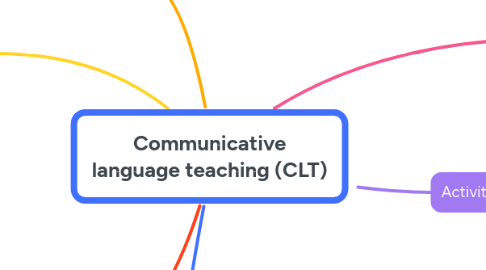Communicative language teaching (CLT)
by Нина Гордиенко

1. Assessment
1.1. Self-assessment
1.2. Performance-based assessment
1.3. Peer assessment
1.4. Observation and feedback
2. Activities
2.1. Role-playing
2.2. Group discussions
2.3. Information gap activities
2.4. Project-based learning
2.5. Language games
3. Benefits
3.1. Increased motivation
3.2. Real-world communication
3.3. Focus on meaning over form
3.4. Improved fluency
3.5. Collaborative learning
4. Definition
4.1. Communicative Language Teaching (CLT) is an approach to language teaching that emphasizes the use of language in real-life situations, with a focus on communication and interaction between learners. In CLT, language is viewed as a tool for communication, rather than simply a set of rules to be memorized.
4.2. The goal of CLT is to help learners develop their communicative competence, which includes not only their ability to use the language accurately, but also their ability to understand and interpret messages, and to use appropriate language in different social contexts.
5. Role of the teacher
5.1. Act as facilitator
5.2. Encourage learner autonomy
5.3. Provide feedback
5.4. Select and design materials
5.5. Scaffold learning
5.6. Provide opportunities for communication
6. Drawbacks
6.1. Difficulty in assessment
6.2. Limited effectiveness for beginners
6.3. Time-consuming
6.4. Need for a skilled teacher
6.5. Overemphasis on communication


